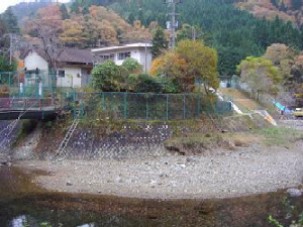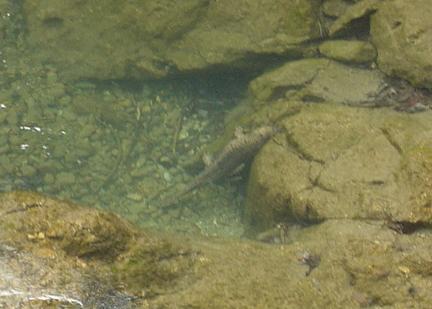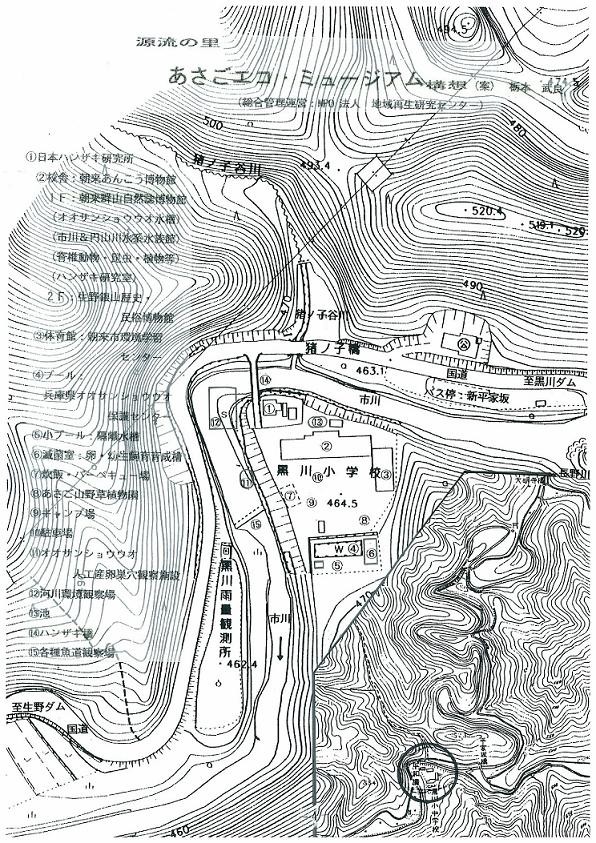Non-profit Organization The Hanzaki (Japanese Giant Salamander) Institute of Japan <Purpose and Background>
Purpose and Background
『The Purpose and Background of the Hanzaki Institute of Japan』
Director Takeyoshi Tochimoto
"Hanzaki" is the local Japanese name for the Japanese Giant Salamander. The mouth of the Japanese Giant Salamander stretches over the entire width of its head. When open, the mouth is the same width as its body. The Japanese Giant Salamander remains still in the water, waiting intently for prey to approach its snout, and then quickly opens its massive mouth to catch its meal.
The Japanese Giant Salamander has a large mouth, as if its face was torn in half |
A Japanese Giant Salamander catches its prey |
This world’s second largest amphibian is distributed west of the Gifu Prefecture in Mainland Japan and in parts of Shikoku and Kyushu Islands. The Japanese Giant Salamander is prolific to the provinces in the rivers of the Chugoku Mountains, but also can be found elsewhere. Once abundant across the globe, only fossils remain in the European continent, suggesting the lineage is trending toward extinction. Only three species within the giant salamander family are known, which can be found in Japan (Japanese Giant Salamander), China (Chinese Giant Salamander), and the United States (Hellbender). Global warming is a risk to Japanese Giant Salamanders as river water temperatures are becoming too high to support them. Without adequate habitat, the Japanese Giant Salamander may soon become extinct.
The Himeji City Aquarium has been actively focused on preserving and researching the natural histories of local aquatic animals. The aquarium has been producing ecological research and recommendations for conservation of the giant salamander for 30 years. Despite being designated a special natural monument of Japan and its name recognition, ecological surveys have hardly been done. There is no way to develop conservation plans without understanding the animals’ life history. Even basic data on the longevity of these animals do not exist except for the report that salamanders brought to the Netherlands lived up to 51 years. The lack of the longevity data is partially because Japanese Giant Salamanders likely live longer than humans. There is an issue of timeframe of the research that one researcher cannot handle alone.
In my research field, there are several closed schools at Ikuno Town, Asago District, upstream on the Ichikawa River. The former Kurokawa elementary and middle schools and teachers’ quarters along the Ichikawa River caught my attention. The two-story school building had been closed in 1992. The dormitory was left clean enough to be used immediately. The building was granted to Asago City Board of Education in 2005. In August of that year I was allowed to use the building as a research base. The building was named "The Hanzaki Research Institute of Japan" after the old Japanese name for the Japanese Giant Salamander. The old Japanese name for the giant salamander was chosen because the present name for the Japanese Giant Salamander, オオサンショウウオ (Ōsanshōuo),is very long-winded.
The sign of the Hanzaki Institute of Japan |
An Exhibit at the Ankou Museum Cente |
Carrying a search tool, a sleeping bag, and a flag saying “research in progress”, I drive around among the mountains of Ikuno by bicycle. The route back to the Research Institute is easy as it is downhill, but the trip out to the field involves climbing the steep slope of the Ikuno dam.
Ikuno was once government property and there was a magistrate's office nearby where a large Japanese-style inn (or Hatago) called "Izutsuya" had flourished. The furniture and instruments used in Izutuya were donated to the town and are housed in this school. I have a big dream now. I would like to create a miniature aquarium displaying the wildlife of the Ichikawa River and Maruyama River watersheds as well as a natural history museum displaying insects and birds from the region on the first floor of the school building. On the second floor, I dream about creating a museum of history and culture of the region. I am currently formulating a plan of developing the school into a comprehensive museum the “Asago Ankou Museum”. “Ankou” is a local name for the giant salamander. The goal is to realize coexistence between the research Research Institute and the museum.
The gymnasium can also be used for a variety of training sessions, lectures and research association meetings. Tents can be set up in the schoolyard. If the facilities and staff are improved, the school will be the center of environmental education in Tajima region, which will allow us to host awareness-raising activities and spread information. The research Research Institute can also provide opportunities of camps and river play for the children of nearby big cities. The school is entirely surrounded by mountains except for a bridge connecting the school to the road, providing a great natural setting. Looking down from the bridge, you can also observe giant salamanders in their natural habitat. In addition, there are two swimming pools that can be used as breeding facilities once water from the mountains is pulled into the pools.
 |
 |
The former Kurokawa elementary and junior high schools, which now house the facility |
"Black Lord", who lives in a natural burrow under the bridge |
We identified and are tracking 1,350 individuals that were found during a survey run from June 1975 through December 2007. More than 750 individuals were embedded with a microchip to serve as a permanent label. I am excited about the results of the individual tracking for the coming decades but I have not been left with that time. We wish to implant as many microchips as possible into juveniles, giving us the ability to identify and track them in the future. Old travel writings indicate that the salamander can be found in Ichikawa water systems from Himeji to Ikuno. The Hanzaki Institue of Japan was founded to maintain Japan’s proud natural heritage for future generations. More activities are desired for the future, but the founding of the Hanzaki Research Institute of Japan has been an achievement.
The Hanzaki Research Institute of Japan has obtained sponsorship from a number of people, including the NPO Research Research Institute for Regional Regeneration (since January 2006), the Asago City Board of Education, the Hyogo Prefecture and countries, and the Agency for Cultural Affairs. Step by step we move closer toward realizing our dream of protecting the Japanese Giant Salamander.
2006/8

Tochimoto director speaking gently and passionately

A diagram of the Research Institute within the closed school. Little by little, our dream continues to grow
